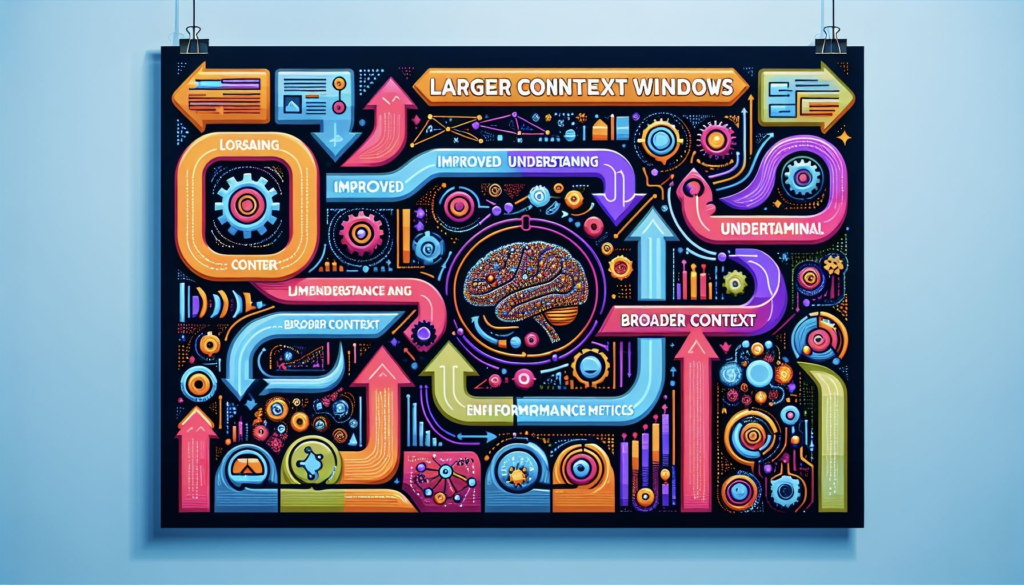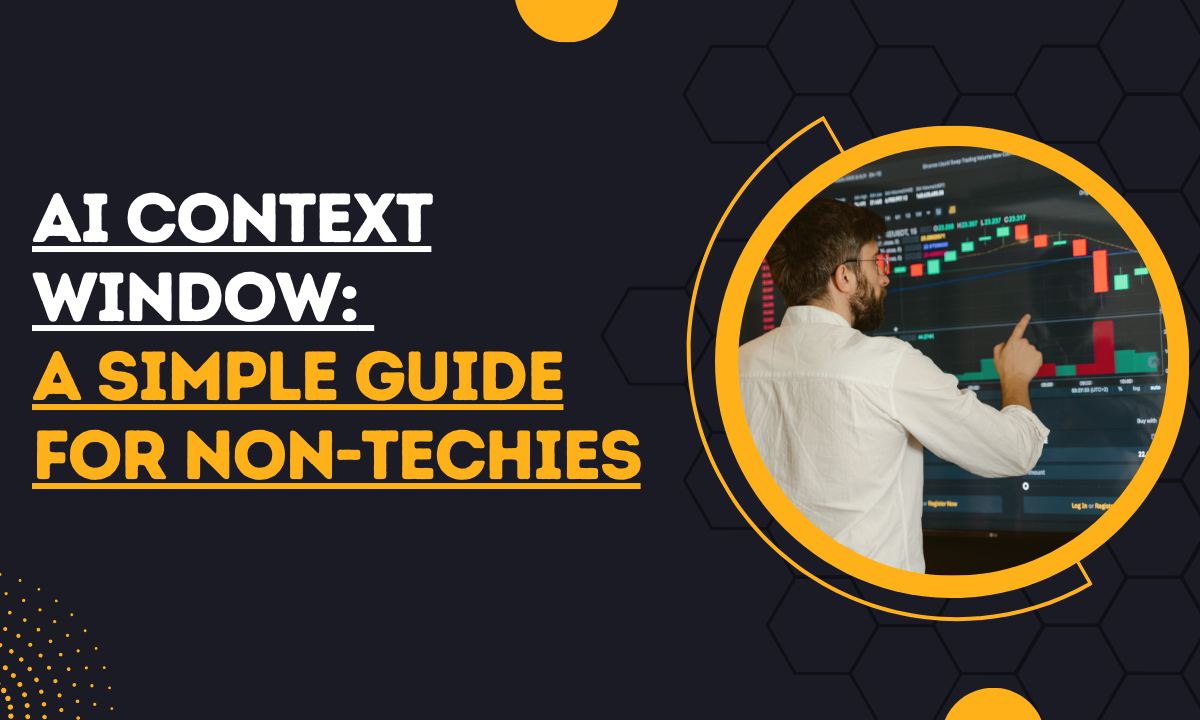AI Context Window: A Simple Guide for Non-Techies
When people first hear the term AI context window, it often sounds too technical or abstract.
Yet, this concept is central to understanding how modern AI models like ChatGPT actually “think.”
In simple terms, the context window defines how much text an AI can keep in its short-term memory while interacting with you.
Whether you are chatting, analyzing documents, or writing code, the context window determines the limits of what the AI can recall and respond to effectively.
In this article, we’ll unpack the mystery of context windows in clear, practical terms.
What Is an AI Context Window?
As AI pioneer Stuart Russell once said, “Machines are intelligent to the extent that their actions can be expected to achieve their objectives.”
To achieve these objectives, AI models need to understand and work with information.
This is where the context window comes in.
The AI context window simply means the space or limit within which the AI can read, remember, and process input before producing an output.
Unlike humans, who can recall years of experiences, AI has no true long-term memory.

Source: Zilliz
Instead, it relies on this “working memory” of tokens, or text chunks, to stay on track.
Think of it as a chalkboard in a classroom.
The board can hold only so much writing before you must erase something to add more. Similarly, once the AI’s context window is full, it forgets earlier parts of the conversation or document.
This limitation helps users understand why AI sometimes “forgets” things in long chats.
Tokens – The Building Blocks of the Window
What are tokens?
To understand the AI context window, you need to grasp the idea of tokens.
A token is not exactly a word; it’s a piece of text. For example, “butterfly” may count as two tokens (“butter” + “fly”).
How do tokens work?
When you interact with an AI, your words are converted into tokens, and these tokens fill up the context window.
If the window allows 8,000 tokens, once you cross that limit, the AI loses the earliest part of the conversation.
Analogy
Imagine your brain could only remember the last three pages of a book you’re reading.
Every time you flip the page, the first one disappears. That’s exactly how a context window works.
Understanding tokens helps non-technical people see why AI sometimes struggles with lengthy discussions, code reviews, or legal documents.
The bigger the window, the more useful the model becomes.
How Big Are Context Windows Today?
Early models
The size of the AI context window has grown rapidly in recent years.
Early AI models had only a few thousand tokens of memory.
GPT-3, for example, had a 2,000–4,000 token window, roughly equal to a short novel chapter.
Modern models

Source: Bulbapp.io
Modern models, however, boast windows of 32,000, 128,000, or even millions of tokens.
That’s like remembering entire books or long conversations without losing track.
This is why newer models can summarize lengthy reports, review full codebases, or hold more natural conversations without “forgetting.”
Limits of size
Still, larger windows do not mean perfect memory.
The AI doesn’t actually “understand” text like humans. It processes probabilities of what comes next.
A bigger context window gives it more reference points, but if overloaded, the model may still hallucinate, skip details, or produce shallow summaries.
Context Window vs. Human Memory
Human comparison
The AI context window often invites comparison with human memory.
Humans have both short-term and long-term memory. You can recall a phone number for a few seconds, then forget it, while your birthday or childhood moments stick forever.
AI difference
AI has no true long-term memory unless paired with special tools.
Its context window functions only like short-term memory. Once full, it drops earlier data without regret or awareness.
Why it matters
This difference explains why chatting with AI feels smooth at first, then suddenly it “forgets” something you said 15 minutes ago.
It’s not ignoring you; the memory board is simply full.
Researchers are now exploring hybrid systems where AI can retrieve stored information outside the context window, making it act more like humans who mix short-term focus with lifelong recall.
Practical Applications of Context Windows
Education
Teachers use AI to summarize books or provide lessons without splitting the material into pieces.
Legal
Lawyers feed contracts into AI for review, relying on larger context windows to avoid missing clauses.
Programming
Developers input entire codebases so AI can debug across multiple files.
Business
Analysts use AI to scan through thousands of customer reviews for insights.
In each case, the size of the context window defines what’s possible. A small window means breaking up tasks, while a large one allows end-to-end processing in one go.
Advantages and Limitations
Advantages
- Enables AI to handle larger inputs.
- Makes conversations feel smoother and more human-like.
- Supports analysis of long, detailed documents.
Limitations
- Once full, earlier information is lost.
- Bigger windows cost more computing power.
- Even with large windows, AI may not “truly understand.”
So, while context windows are powerful, they are not the final solution.
Researchers are experimenting with memory augmentation, retrieval systems, and smarter summarization to overcome these limits.
The Future of Context Windows
Possibilities
Looking forward, the AI context window points to exciting possibilities.
Imagine AI models that can process your entire email history, lifetime medical records, or even every book you’ve read. With enormous context windows, this could become reality.
Challenges
But bigger windows also raise privacy, safety, and ethical questions.
Should an AI remember everything you say forever? What if sensitive data gets leaked or misused?
Likely path
The future likely lies in balanced systems: big context windows combined with smart retrieval methods and strict safety rules. This ensures AI is powerful yet responsible.
As AI evolves, understanding context windows helps everyday users grasp why some models feel “smarter” than others. It’s not magic—it’s memory capacity.
AI Context Window in Detail.
| Aspect | Simple Analogy | Real-Life Example & Explanation |
|---|---|---|
| Definition | A blackboard size | Imagine a teacher writing on a blackboard. The bigger the board, the more information stays visible at once. In AI, the context window is the “board” where all active text is written and read. |
| Tokens | Lego bricks | Words are broken into small chunks called tokens, like Lego bricks. For instance, “butterfly” = 2 tokens (“butter” + “fly”). AI doesn’t see words as we do — it builds meaning by stacking these Lego pieces together. |
| Small Window | Post-it note memory | Think of writing a reminder on a Post-it note. Space is limited. Early GPT-3 had ~4,000 tokens (about one book chapter). If you exceeded that, older details would fall off, just like running out of sticky space. |
| Large Window | Whiteboard wall | A giant whiteboard wall lets you hold much more information at once. GPT-4 Turbo or Claude 2 can handle 200,000 tokens (hundreds of pages). This makes them great for summarizing research or analyzing entire reports. |
| Forgetting | Erasing chalk to add more | When the board is full, you must erase earlier notes. Similarly, once the context window fills, the AI “forgets” the oldest parts of the conversation. This is why in long chats, the model may lose track of the start. |
| Future | Memory + library system | Imagine if the teacher not only had a blackboard but also a personal library. Future AI will combine short-term “board memory” with long-term recall, remembering details from past conversations even after sessions end. |
In simple terms: a small context window forces you to chop up your work, while a large context window lets you process a whole book, a giant legal contract, or a company’s dataset in one go.
Yet, even a large context window is not true memory; it’s just a bigger working space.
The real breakthrough will come when AI combines big context windows with external memory systems that can be searched, much like humans retrieve memories from the past.
FAQs
1. What is a context window in AI?
It’s the short-term memory limit of an AI model, measured in tokens, defining how much text it can process at once.
2. Why does AI forget earlier parts of a conversation?
Because once the context window is full, the oldest tokens are pushed out.
3. Are larger context windows always better?
Not always. They increase capacity but also cost more and don’t guarantee deep understanding.
4. Can AI have unlimited memory?
Not with current models. Researchers are working on hybrid systems combining windows with external memory.
5. Which AI models have the biggest context windows today?
Models like Claude 2 (200k tokens) and GPT-4 Turbo (128k tokens) are leading in this space.
Related Posts
Natural Language Processing (NLP) for Smarter Search Intent
Foundations of Machine Learning: Unlock AI Secrets for Beginners
AI and Superintelligence: What It Means for the Future of Humanity
101 FAQs for Non-Techies to Learn AI from Scratch
Conclusion
The AI context window shows us that artificial intelligence isn’t just about clever algorithms; it’s also about how much information the model can hold in its working memory.
For laymen, this means understanding why AI sometimes forgets, why newer models feel smarter, and why future systems will likely combine larger windows with smarter memory solutions.
Appreciating the context window gives us a clearer, simpler lens into the strengths and limits of today’s AI.

